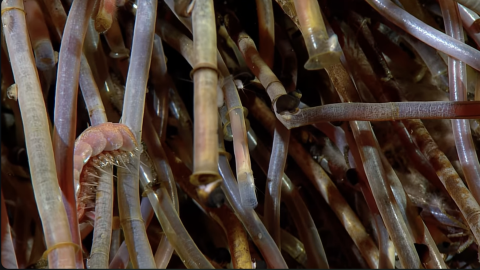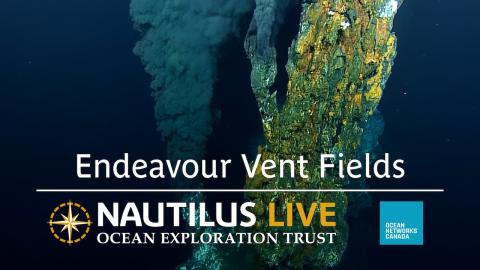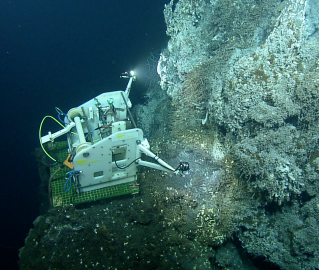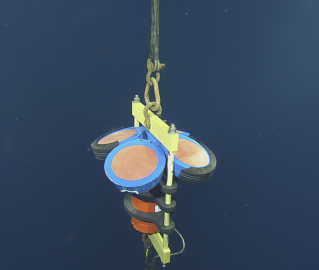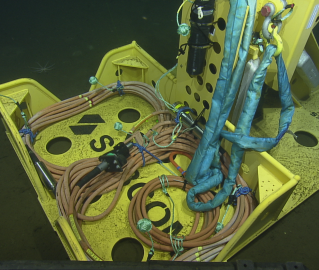Deep-Sea Biology of Cold Seeps and Gas Hydrates
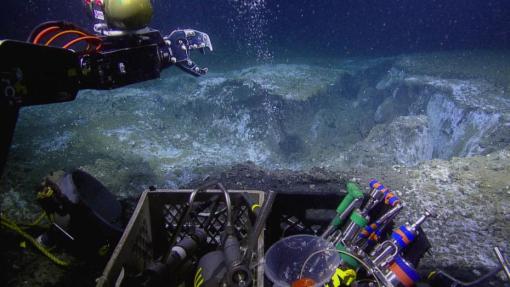
This blog was written by deep-sea scientist and science communicator Moronke Harris.
Seabed cold seeps have been discovered in every ocean basin, occurring across the globe along the majority of oceanic continental margins. In these areas, where the continental crust meets deeper oceanic crust, reduced chemicals (e.g., hydrocarbons) from the sediment enter the hydrosphere through fissures in the ocean floor. Occurring below 200 meters, seeps play a vital role as critical sources of nutrients in the surrounding comparatively food-scarce deep-sea environment. As biological oases, these ecosystems are characterized by high productivity and endemism.
Four different types of cold seep environments exist, categorized based on the chemicals they release or the seafloor features present at their locations: methane seeps, brine seeps or pools, mud volcanoes, and oil seeps. At methane seeps, bubbles of methane gas emanate from the sediment and form the basis of chemical energy required for the survival of chemosynthetic ecosystems that thrive in the absence of sunlight.
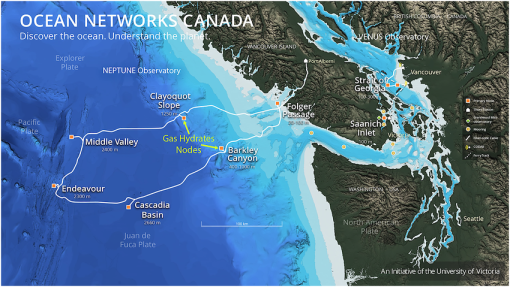
Canadian Pacific Methane Seeps
Located offshore of Vancouver Island, Canada, the northern Cascadia continental margin is situated along the subduction zone of the Juan de Fuca Plate. As a result, in the Canadian Northeast Pacific, several known methane seeps (over 1,000) are distributed across the ocean floor, stretching from just northwest of Haida Gwaii to the area southwesterly adjacent to Vancouver Island. These seeps are aggregated into two main sites: Clayoquot Slope (~1300 m) and Barkley Canyon (~800 m). These locations in the Southern Shelf Bioregion are two of six total nodes within Ocean Network Canada's NEPTUNE (Northeast Pacific Undersea Networked Experiments) cabled observatory network, an 800-kilometer loop allowing fiber-optic-connected technologies to gather continuous, high-resolution environmental data across the entire Juan de Fuca tectonic plate.
Here, far below the ocean surface, oil and gas seepage supports interspersed, patch-like chemosynthetic communities consisting of white filamentous bacterial mats, vesicomyid clams (Calyptogena sp.), and vestimentiferan tubeworms (Ridgeia piscesae). Foraging non-seep megafauna such as sablefish (Anoplopoma fimbria) and hagfish (Eptatretus stoutii) are also commonly observed. Even commercially important species, such as tanner crabs (Chionoecetes tanneri), longspine thornyheads (Sebastolobus altivelis), and the Patagonian toothfish (Dissostichuseleginoides) are found in these remarkable environments. A host of species utilize cold seeps for trophic support!
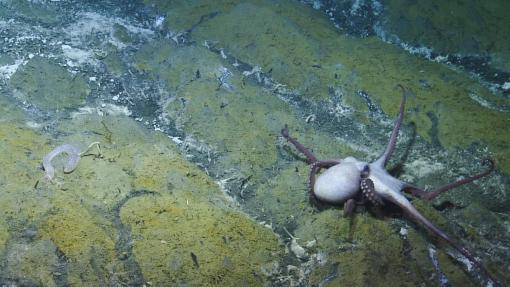
Barkley Canyon Exposed Gas Hydrates and Methane Seeps
Resembling icebergs on the seafloor, the prominent gas hydrates of Barkley Canyon (area ∼0.15 km2) were discovered accidentally in 1992 by bottom trawling activity. These outcrops, uniquely exposed above the seafloor, are a rare incidence of visible frozen gas hydrates in Canadian waters. Additionally, their structures surprisingly consist of high-temperature formation (i.e., thermogenic) complex hydrocarbons (Structure II and H) associated with fossil fuel sources, whereas the majority of hydrates existing globally along continental margins are less complex (Structure I) and from microbial biogenic sources. The methane gas released from Barkley Canyon seeps travels far above its benthic source. Hydrate-associated gas venting in the form of bubbles, seen acoustically, extends into the water column as high as ~300 m depth.
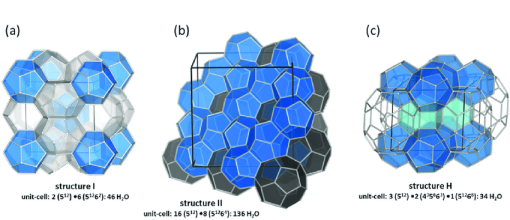
Clayoquot Slope Hidden Gas Hydrates Methane Seeps
At a depth of 1,260 meters in the Cascadia subduction zone, Clayoquot Slope (area ~16 km2) boasts large amounts of variable methane emission in the form of bubbles. Though the source of this variability is poorly understood, it is known that the effluent streams of methane gas found in this region originate from sediment deposits in the accretionary wedge, an accumulation found where the oceanic crust is subducting beneath the continental plate. These deposits have been forming for millions of years. Unlike Barkley Canyon, which boasts large amounts of thermogenic hydrates, the sediment-covered gas hydrates found at Clayoquot slope are both biogenic (i.e., microbial) and thermogenic in origin.
The Importance of Cold Seeps
Cold seeps play a vital role in the deep sea, sustaining entire communities dependent on bacteria that convert reduced chemicals into food through chemosynthesis. Over the last 35 years, advancements in water column imaging techniques and exploration technologies have greatly facilitated the discovery of numerous cold seeps.
Through the study of these environments, researchers can advance our knowledge of their biodiversity and, in turn, potential global connectivity. By knowing what is out there, we can better position measures for protection and societal advancement.
For more on Canadian cold seeps: DFO. 2018. Assessment of Canadian Pacific Cold Seeps against Criteria for Determining Ecologically and Biologically Significant Areas. DFO Can. Sci. Advis. Sec. Sci. Resp. 2018/002. https://waves-vagues.dfo-mpo.gc.ca/library-bibliotheque/40688549.pdf
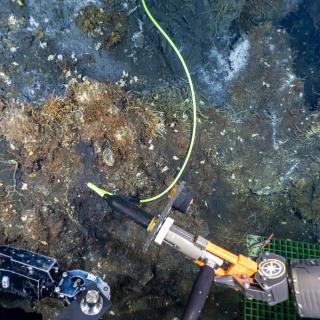
#ONCAbyss Summer 2024
This expedition brings E/V Nautilus to the Northeastern Pacific Ocean for the eighth year of the partnership between Ocean Networks Canada and OET.
